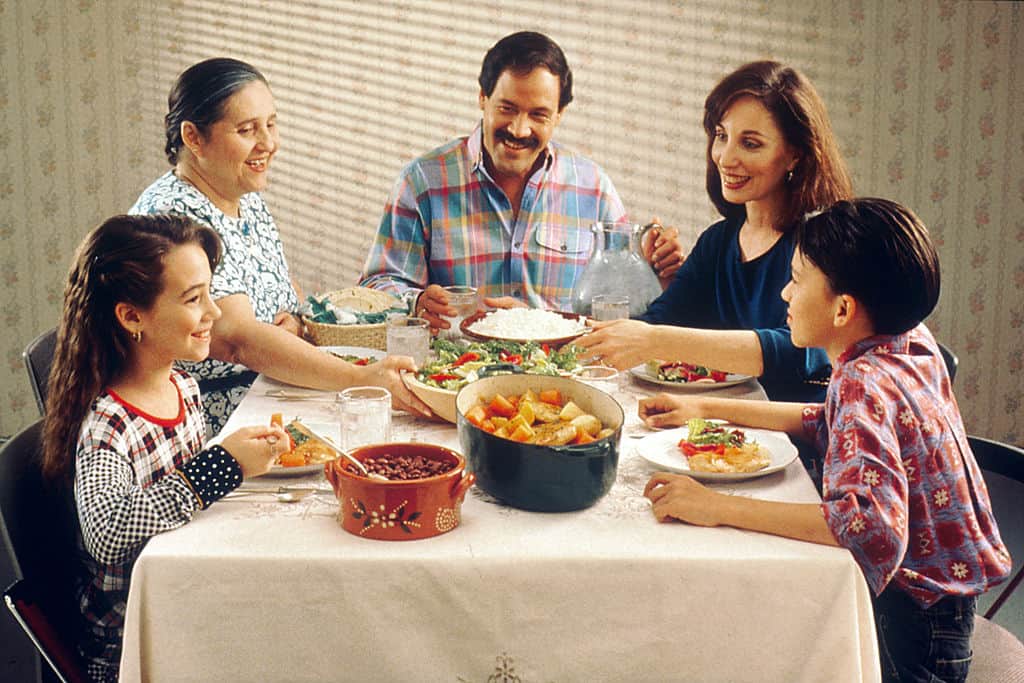How can we be effective parents? It’s the biggest key to influencing our kids.
What’s the foundation of effective parenting? This is key because all the strategies that we have to guide our children depend upon this foundation. Since screen time is something that virtually all parents struggle with, it is particularly important that we build this foundation. Because this foundation is so critical, it is the first level of the Tech Happy Life model. Although I’m using this model for helping to parent around technology, this foundation applies to ALL parenting.
The Tech Happy Life model, as well as much, much more, is covered in my new book, written with my good friend and colleague, Dr. Jon Lasser. It’s titled Tech Generation: Raising Balanced Kids in a Hyper-Connected World. It officially comes out August 1, but it is available for pre-order now.
I hope you check out the latest video, but the full transcript is included below.
Tech Happy Life YouTube Episode 6: The Foundation for Effective Parenting
Welcome back to Tech Happy Life with Dr. Mike Brooks.
In today’s episode we’re going to dive down a little deeper into the Tech Happy Life Model. As you recall from last episode, I introduced the Tech Happy Life Model, [which] is a framework for helping you as a parent manage the pull of technology in your own family, to get more of the benefits that technology has to offer, and reduce some of those negatives.
So, the model has 4 levels. If you recall, it’s a pyramid.
The bottom level of the model is the foundation, and it is about building the relationship with our kids. Now, building the relationship is so important because that’s how we influence our kids. The stronger the relationship we have with our kids, as parents, the more likely we’re able to influence them through the relationship. So, it’s in our interest, and in their interest to invest in the relationship with our kids and build it as strong as possible. The rest of the model rests on this foundation.
So if you think of building the relationship, an analogy would be like growing a garden. A garden needs water, and fertile soil, (sunshine) and those sorts of things in order for the plants to grow. In the same way, for relationships to grow in a healthy way we’ve got to nurture the relationship. So, we can do this by:
- Spending Quality Time With Our Kids
- Bowling
- Putt-putt
- Hiking
- Going to the pool
- Cooking
- Karaoke
- Playing board and card games
I want to be honest with you and I’m gonna be outing myself a little bit, and this is hard for me to say — it’s something I was ashamed of when I was younger and as a teen and I tried to hide it from people, but, you know, I’ve embraced it. Now, as an adult, I’m no longer ashamed to say this but [deep breath] I play Dungeons & Dragons. I was first introduced to Dungeons & Dragons when I was about 11 or 12 years old, and I have to say it had me at “hello.”
2. Understanding The Magic Of Our Imagination, Connection, And Play
After the first time I played, I literally could not go to sleep at night because I was so excited to play the next day. And now, as a parent, I’ve introduced Dungeons & Dragons to my kids — I have three boys, 14, 11 and 6 — and they all absolutely love Dungeons & Dragons, so we play together as a family. It’s really a magical experience because so many things go into Dungeons & Dragons, including our imagination, teamwork, problem solving, and identifying goals to work toward. There’s math and reading; everything comes into play with Dungeons & Dragons.
Now, you might not be a super-geek like me, but this is about finding what works for you and your family. The important thing is — and you might have experienced this yourself already — kids can really enjoy these different games and activities. It could be building models or robots, or flying kites, or building rockets, or playing board games. But you see that kids really enjoy these things once they sink their teeth into them, but you might need to lead the way and get the ball rolling. You need to unplug long enough for them to experience that magic that can be found in these different activities.
3. Learning The Magic Ratio
Another way to build the relationship with your child is using what’s considered to be the Magic Ratio. Now, the Magic Ratio is about 5 positive interactions to every 1 negative interaction. It was identified by psychologists Dr. John and Julie Gottman at the Gottman Institute. They were researching couples’ relationships and what they kept finding was this ratio of 5 positive interactions to 1 negative interaction predicted healthy relationships. This ratio has been found in other relationships, like teacher student relationships, and work environments, and parent-child relationships. Now, 5-to-1 doesn’t mean that there are there are these disingenuous statements or praises like “good job, good job, good job”. They could be positive interactions like smiles, hugs, pats on the back. And they’re specific to the child — they’re genuine and come from the heart.
4. Becoming The Change
Another helpful strategy is a twist on the Ghandi quote (attributed to him), “Be the change you want to see in the world.” It’s “Be the change you want to see in your kids.” Now what I mean by this is that we have to practice what we preach. We cannot be asking from our kids what we are not delivering ourselves. In terms of limiting technology use (and other activities), many parents are as guilty as their kids of overusing technology. As a psychologist, in my office I have literally had teens weeping great heaving sobs because their parents are on the screens too much, and not paying any attention to them. And think of what that says — what message does it send when our eyes are on our screens instead of on our kids? It’s saying “we value what is on our screens more than you as a child,” and that’s NOT a message we want to be sending to our kids.
Turning A Loss Into A Win
As parents, we will mess up. I do it all the time. Sometimes I catch myself looking at my screen while my child’s trying to tell me something. Now, that’s okay when it happens, and it will happen, but what we can do it turn a loss into a win?
They might be telling us about something that happened at school and our eyes are on our cellphones and we realize it and say:
“Oh, I’m sorry Johnny! I was looking at my cellphone and checking my email and you were trying to tell me about your day! I’m really sorry about that, that was rude. Let me turn off my cellphone. I’m putting it down right now. Now, tell me about your day!”
Now, it’s a great strategy to turn our mess-ups from a loss to a win. When we’re correcting our own behavior, we get a free pass! Kids can’t get defensive when we’re correcting ourselves. What we’re doing is modeling what we’d like to see in our kids.
Model Engagement
Another way to effectively parent is by modeling engagement in other activities. Engagement can be with our kids’ activities but also showing that we can sit down and read a book for leisure — we don’t have to be on the screen. That’s great modeling for kids to see! Us “plugged in” to other activities besides our screens.
What About Your Screen Time?
Now, if you’re brave, as a parent, you might want to try this — ask your child what they think about your screen use. Be prepared — they might give you feedback that you’re on the screen too much and that it bothers them! But if you’re brave enough to do this and willing to do this, listen to what your child has to say because they have important information to give you. And here’s what — if it’s a problem for your child, it’s a problem. You have got to put down the defenses and just hear them and then for the sake of the relationship, make those changes.
In the next episode we’ll be moving up the levels of the pyramid to the Green Light Level, which is about preventing problems from occurring. Just remember that all the other levels: the Green, Yellow, and Red Light strategies that I’ll be covering in future episodes all rest on their being the solid foundation of a strong, healthy relationship with our kids.
This has been Tech Happy Life with Dr. Mike Brooks. Thanks so much for joining me today, and I hope you join me in future episodes! Please subscribe to my Tech Happy Life YouTube Channel, and I hope to see you in the next episode!

